As promised, today is Monday, and the typesofchicken.com staff will deliver as promised. The Buff Orpington Chicken is the focus of this piece.
Last week we gave you the pros and cons of keeping Silkie chickens.
The week before, we gave you the pros and cons of keeping the Rhode Island Red Chickens.
In the first place, I’d want to talk about where this breed came from.
Origin and History about Buff Orpingtons
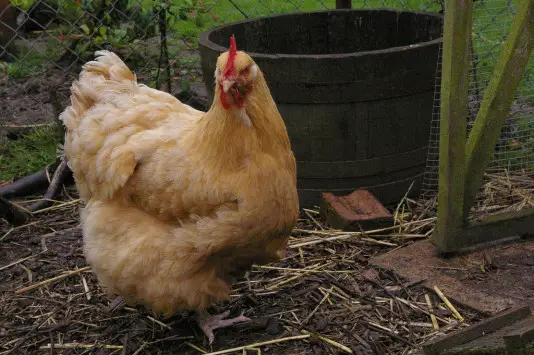
Some people call them Buffington chickens. Let’s focus on the history and origin first!
In the early 1800s, there was a widespread craze for hens that came to be known as “Hen Fever.” It spread across many English-speaking countries, where it was met with enthusiastic support for rare and exotic chicken breeds. General interest in poultry remained as the fad faded, but the focus shifted from exotic species to utilitarian birds.
Quality meat and an abundance of eggs were both necessities, therefore it was time to switch to dual-purpose chickens. The primary emphasis of American breeders shifted to generating birds of this sort as a result of a newfound enthusiasm in doing so.
American dual-purpose birds were lauded for their adaptability, but they failed to gain widespread popularity in the United Kingdom. Chickens with yellow skin weren’t as popular as their white-skinned counterparts, therefore this was the likely explanation.
Meet the creator ~ William Cook ~
British man called William Cook set out to create a bird that competed with the best of its American counterparts. His goal was to breed a white-skinned, fast-growing chicken that was delicious and lay plenty of eggs.
Due to a craze for raising chickens, many different types of exotic breeds were brought in from as far afield as China and India. Unsurprisingly, these birds did not do well in the weather of England, and they were not very useful since they did not lay many eggs or provide much meat. What they did provide, however, was a rich genetic resource that could be leveraged to revitalize older chicken breeds. Cook saw the potential in this, so he set out to use it in the development of his own breed.
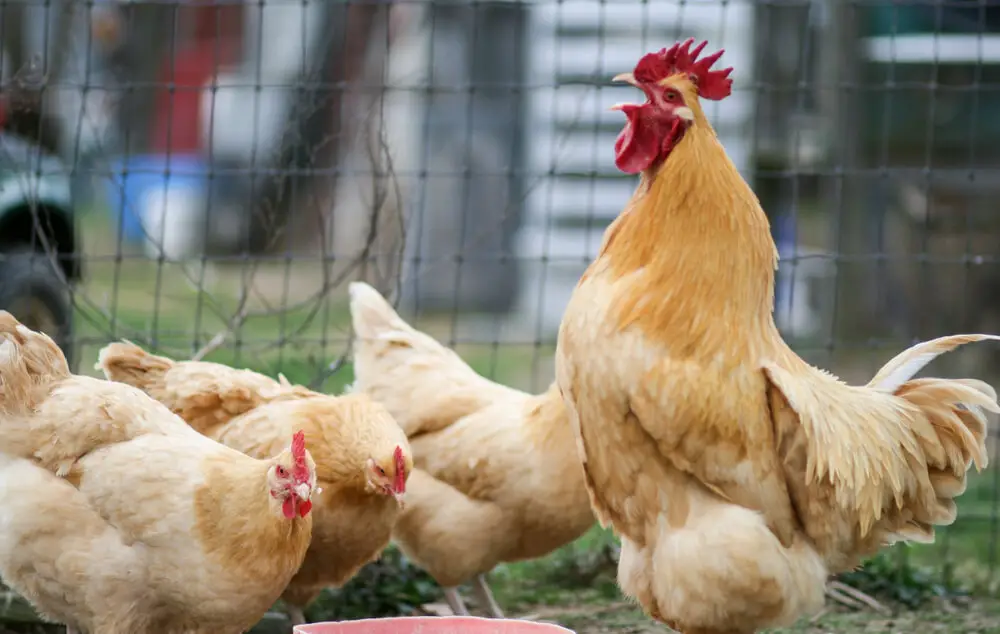
He used inbreeding to produce a new breed of chicken, which was controversial at the time but is now widely accepted by the global poultry industry.
It wasn’t until 1886 that the world got its first look at Cook’s creation—a black dog he called an “Orpington,” after the town in Kent where he was born and raised. It only took five years for the Orpington to become a global phenomenon, thanks in large part to its widespread exportation.
In 1891, Cook sent a huge shipment of Orpington chickens to America to showcase to poultry owners.
What colors are Buff Orpington chickens available in?
William Cook’s dedication to the breed’s betterment paid off with more variety in appearance and higher quality birds. Cook was inspired by this, and he set out to develop other variants.
Black Orpington came first, followed by white, buff, specked (Jubilee), and mottled hens (Spangled). The additional Orpington color patterns of Blue and Cuckoo were developed later with the aid of his daughter and her husband, A.C. Gilbert.
Only the Buff, Black, White, and Blue Orpington types are recognized by the American Poultry Association. However, there are a wide variety of additional colors available.
Also, there is a breed of chicken called a Red Orpington Chicken, but the history of this breed is a little unclear.
It is thought that they were given in 1911 by the daughter of William Cook; however, it was reported afterward that this one is claimed by W. Holmes Hunt. In addition, it was stated that the Reds had been observed prior to this time during the 12th German National Show, which took place in Nuremberg in the year 1908.
Buff Orpington chickens were officially accepted for the first time in 1902 by the American Poultry Association. The Black and White finally got accepted in 1905, while the Blue arrived in 1923. Nevertheless, the Buff Orpington chicken continues to be the most popular in America.
Is there a need to worry about the extinction of Buff Orpingtons?
Prior to their 2016 removal from The Livestock Conservancy Priority List, these historic birds were in danger of extinction. It has been determined that the Buff Orpington are no longer in risk of extinction.
General Appearance & Buff Orpington Personality
First impressions of the Buffington’s are of a round, even fat bird.
Mature Buff Orpington hens should have a rounded body and a U-shaped back. She has a hefty, robust body and an unusually short back for a bird. Her wide-set, strong legs help her maintain her equilibrium. There isn’t a single Orpington that doesn’t have clean legs, but the rest of their feathers help disguise them.
They have lots of feathers, as was previously indicated.
These feathers are a little looser than those of a Cochin but more compact than those of a guinea fowl.
Favorable aspects of breeding Buff Orpington chickens
It is the ideal dual-purpose breed.
There are many dual-purpose breeds out there, but the Buff Orpington hens or the Buff Orpington rooster are famous for their dual purpose.
Due to their size and feather arrangement, they may be excellent layers over the winter. This is what makes them so remarkable.
Does the Buff Orpington survive the cold weather?
They can survive in extremely cold conditions, but the males’ combs should be protected to prevent frostbite. It’s important to provide them with a warm place to rest, since wet feathers may cause quick freezing.
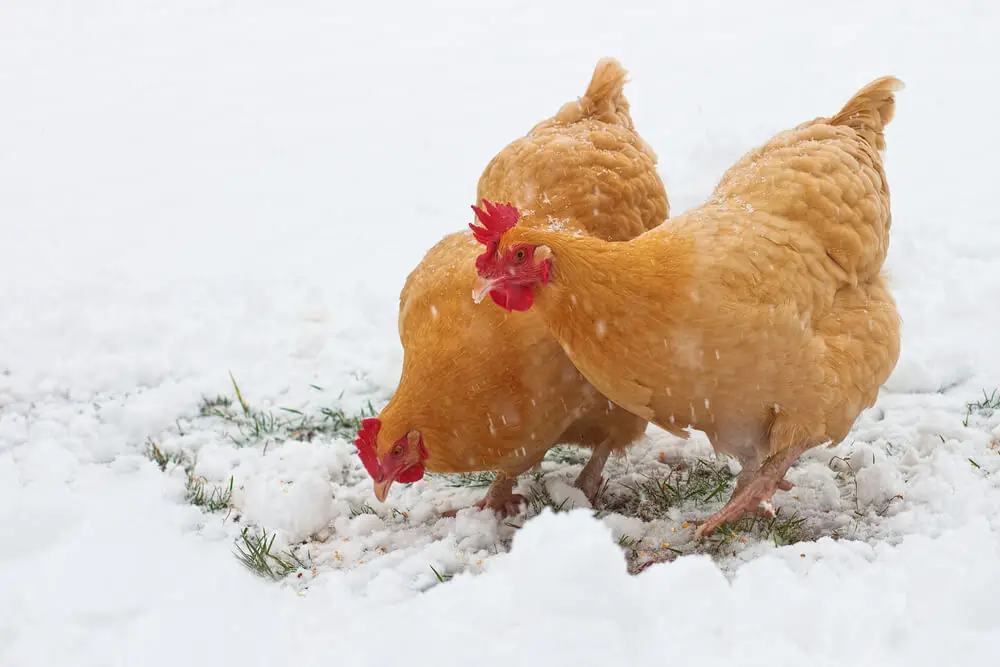
What about their tolerance to the heat?
High temperature is a common concern for Orpingtons in hot weather because of their voluminous feathers. To dissipate heat, they need to be in shady areas.
Is Buff Orpington Rooster Friendly?
Some people say that the Buff Orpington Rooster is friendlier than the Silkies Rooster. It’s pointless to try to draw parallels between the sociability of these two chicken breeds.
Buff Orpingtons are known for being very calm roosters, and some of them are even extremely friendly, which is why they are a farmstead favorite.
Due to their friendly nature, Buff Orpingtons are a great addition to any flock. They can be kept for any reason in your backyard.
In other words, you may keep them as pets or for eggs, whatever you like.
– Read more about –
Silkie Rooster Temperament
Leghorn Rooster Temperament
Are Buff Orpingtons good layers?
The annual egg production of a Buff Orpington Hen is anything from 200 to 280 brown eggs. Between 5 and 7 months old, young hens will start to lay eggs. In only 8 to 10 weeks, a young broiler can weigh between 2 and 2.5 pounds. By the time they are 22 weeks old, they are ready to be eaten.
It’s a rare breed that’s been around for generations.
Most of the Buff Orpington chickens that you can get anywhere are heritage.
Those that raise and sell these chickens don’t tend to breed them together.
Because of this, you may be certain that you will get the full potential of this breed.
If you make sure that the Buff Orpington hens you are getting are 100% heritage, you will get everything you want from your chicken.
Characteristics not to be praised
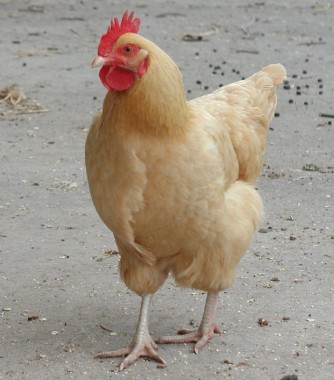
They are too big for some flocks.
Many chicken breeders prefer the smaller breeds of chickens like Silkies for many reasons, such as lack of room in the coop or the run or that their flock is already full for breeds such as the Buff Orpington.
Some chicken keepers also think that if they introduce a big breed such as the Buff Orpington Rooster to their flock is bad. Why? They may disrupt the established pecking order.
Maybe they are too good to be true?
Their friendliness and the fact that they are a heritage chicken breed may cause some confusion among some novice breeders.
If they are represented to be one of the perfect breeds of chickens on the market, it doesn’t mean that they don’t require a regular amount of attention.
To what extent do buff Orpingtons vary in price?
Whether you’re in the market for eggs, chicks, or pullets, it’s always preferable to purchase from a local farmer. For one to four unhatched chicks, prices begin at $3 each. The cost increases to $4 for 1–4 female chicks and decreases to $2.50 for male chicks.
To be found in these hatcheries:
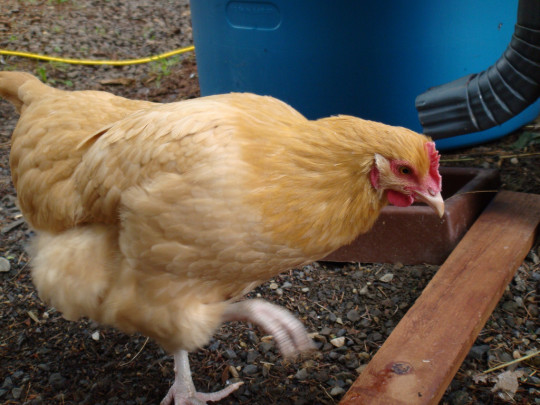
The Buff Orpington Chicken is among the greatest dual-purpose breeds, but only if they are properly prepared. They need the same quantity of the food as other birds.
Don’t assume that just because they prefer to be on your lap that they don’t love certain toys.
Other than this and the fact that they sometimes tend to lose more feathers than other breeds (not yet confirmed), we at the typesofchicken.com team agree that there are no significant cons about this breed of chickens.
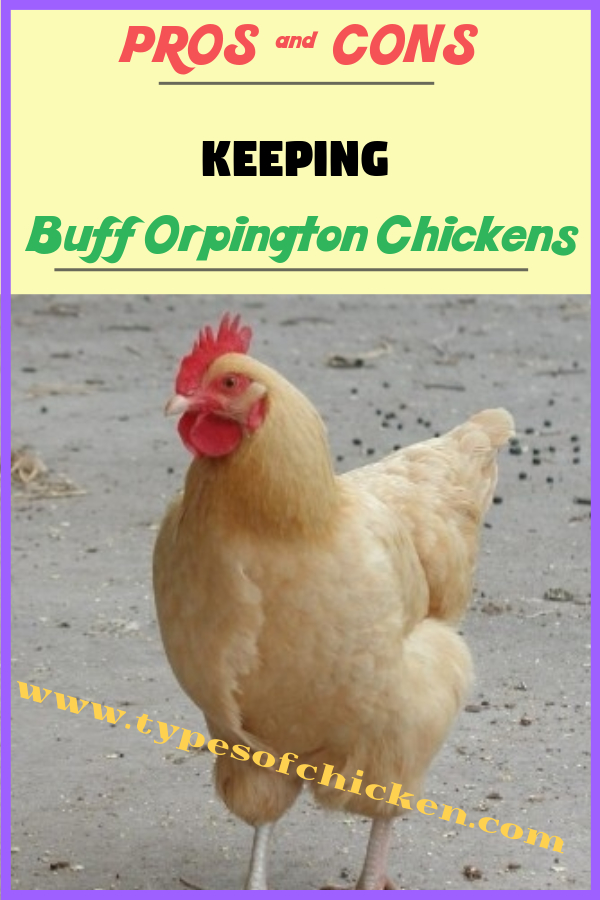
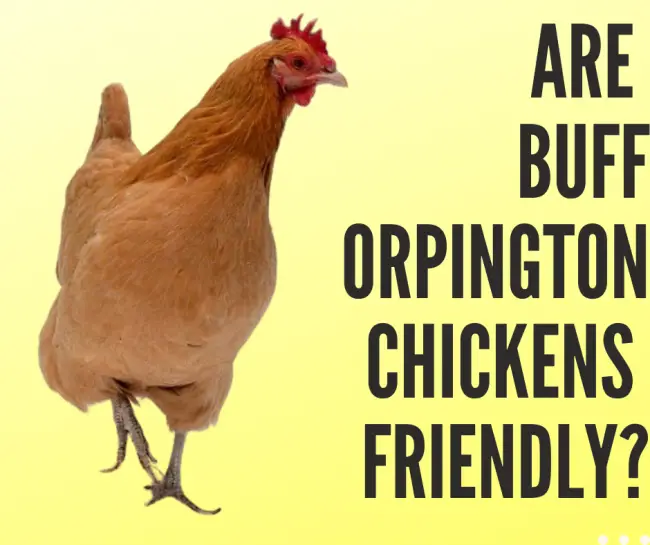

I have had Buff’s for years now, my two girls are getting up there in age so I got 4 chicks to keep Buff’s in my flock. Great egg layers, good temperament. As for loosing more feathers, I haven’t seen that at all! Actually the Buff’s don’t appear to get as bald during molt as the others.
I’ve had 3 or 4 Buffs for years a part of a mixed group of layers and would raise meat kings for meat. 3 years ago I decided to raise my own birds for meat and decided to go with the Buff Orpingtons as a dual purpose bird,it was a good decision.
I have a 8 buff hens,buff rooster and 3 Americans so I can get some green eggs to give away. Buff Orpingtons are a GREAT dual purpose bird
We moved to the country late 2015 and got our first livestock animals the following spring: Three 2week old buff orp chicks from North 40. We lost one that summer to a coyote. Another one died early spring from sour crop. I just euthanized the last buff orp hen yesterday. She died of egg yolk peritonitis. That was very difficult to deal with. When she became a lone hen, she and I bonded. Through my hours of research, I found other people also lost buff orps to EYP. Someone asked if this was possibly an issue specific to this breed because she lost 4 of her 12 buff orps the first year to EYP. It could be a problem common to the breed or it could be that she came from a feedstore who bought her from a breeder who didn’t put any consideration into good genetics. I emphatically agree this breed makes a wonderful pet, if that is your desire. All my buffs were sweet, gentle, friendly with big personalities, especially my last girl. If you’re raising them for meat, might be hard to select a breed that follows you around like a puppy. I sure couldn’t do it. I bought five buff orp chicks in early May, intending them to eventually be my pet hen’s new flock as well as seven white Chantecelor chicks. All five of the new buffs are just like my original three. They are so friendly and sweet, always chatting to me. The other breed, Chantecelors, are flighty and want nothing to do with me (even though they too are advertised as friendly and docile). Their purpose is to be meat chickens so that makes it easier that they are A holes. I do recommend the buff orp, but know they have a way of working themselves into your hearts. The hen I lost yesterday, was given a proper burial as I would do for a pet, and I am mourning her deeply. If you go with this breed, get at least a half dozen because if you end up in a situation like I did with one lone hen, you will end up loving her and setting yourself up for heartache down the road.
I know this is a long shot for a reply but I’m desperate ! I’m watching my moms two chickens over the weekend and it seems as if they got attacked by a fox! She had a buff and a Plymouth Rock and they were the best of buddies . Only the buff survived and she is hurt pretty bad on her back . I’ve been treating her wound but I’m also worried she won’t heal because of loneliness ! She’s been eating , drinking , and pooping and even layed an egg. The buff wanted nothing to do with us before the attack but she’s been very good with letting me take care of her . Should I hurry up and get another chicken before my mom gets back from vacation ? Also she is pretty bossy . Not sure if you know what other breeds work best . Excuse my grammer . I’m on my 4th night shift .
To Little sister, I had 4 chickens until yesterday afternoon. I have 2 RI Reds, and a Plymouth Rock and had a Buff Orpington. I got them all the same day, one day old chicks. I got them last May 1,2018.
Yesterday morning when I pit their feed and water in the coop, they all looked fine. At lunch time, I added water and they looked fine. When I got home after work at 3:30, my Buff Orpington was laying on her side dead. There was no sign of trauma, no bleeding anywhere. She looked as though she laid on her side closed her eyes and died. I was soo very UPSET, she was my favorite bird, friendly, liked to be held. I called her Daddy’s girl. She may have died because of this egg yoke peritonitis, of which I have never heard of. How can you tell she died of this. I buried her near the coop. The 2 reds sometimes let me hold them, but the Plymouth Rock wants NOTHING to do with it. My last flock of 3 birds were RI Reds, and I lost the “runt” when she was 3 yrs old. She to was my favorite, because she was friendly. Please get back to me.
Nice info
to make you guys feel better, I have a buff orpington named candy. She is very sweet, and she loves to follow me around everywhere. she is still alive, and she is best friends with two of my chickens. Padma (buff brahma) and Pip (beautiful big blue chicken don’t know the breed) Pip died recently, and she was so sweet and funny, she would follow you around and when she laid her egg, she would always be so proud of herself. She died suddenly as well, and she was one of my favorite chickens. Padma was really sad because that was one of her closest friends. When Pip died, she went over to the place where we found her, and started clucking quietly, almost like she was crying. Padma and Candy are my personal favorite chickens, and they let me pick them up soooo much! They both love being pet, and working with me on my computer. They are super special, and they would love your chickens too.
We just lost our buff to a possum. I am devastated. She was about 4 years old and bossy as could be to her sisters (a Jersey giant and one we don’t know). She came running up to us wherever we were outside and loved to watch us through the windows. She would let my daughter pick her up and carry her around the yard and even jumped in my hammock with me. I’m so heartbroken that she passed so tragically. My hope was always that my chickens would love a good long life and die happy old hens.
Oooo sorry for your loss Michelle.
I hope your daughter will find similar chicken from your flock.